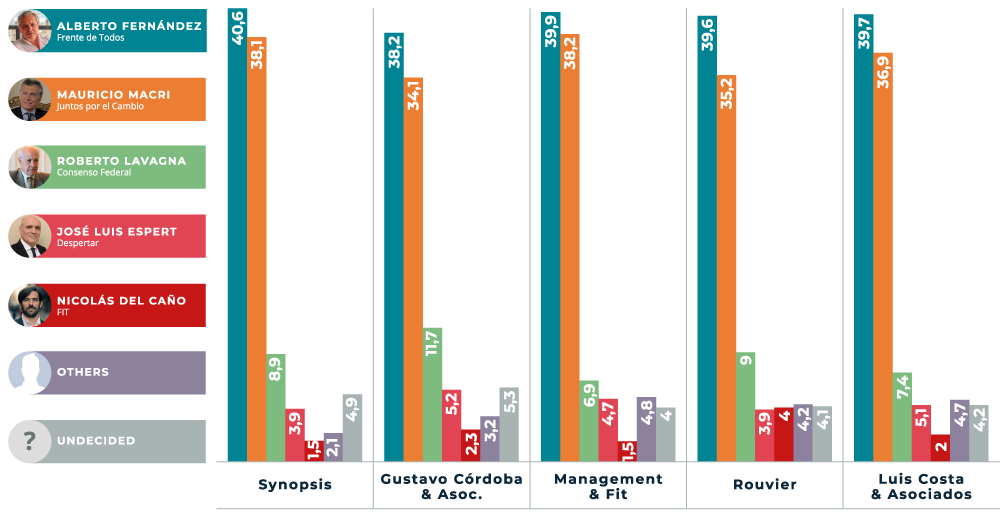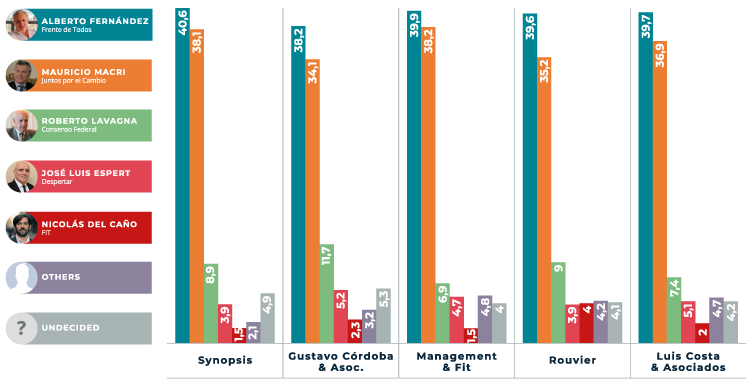In this report, the LLYC Public Affairs team in Buenos Aires analyzes the electoral scenario, the main political forces that could win the presidency and the keys to understanding the process by which Argentina will choose its course in the coming years.
What are the primaries?
Aug. 11, Argentinians must go to the ballot boxes to participate in the Simultaneous and Mandatory Open Primaries (known as PASO for the Spanish acronym):
- Simultaneous: This ballot is held on the same day across the whole country and for all political parties.
- Mandatory: All citizens between 18 and 70 who are listed on the electoral register must cast their vote (it is optional for citizens between 16 and 18 or over 70).
- Open: All citizens participate, regardless of whether they are members of a political party or not.
- Primaries: The candidates being voted on are those who will represent each political party in the general election.
PASOs determine two essential things: which parties or groups will be eligible to participate in the general elections in October and how the final lists will be defined. Each party or coalition may have more than one contender for the same position, which is solved by means of this vote.
What positions are being voted on next Aug. 11?
This year, most provinces have moved the date of their local elections away from the presidential election to prevent the gubernatorial races from being “contaminated” by the national debate. The Aug. 11 primary elections will be held throughout the country for people to vote on national seats (president, vice president, national representatives and national senators).
2019 scenario
MAIN FRONTS
Nine parties are competing for national president and vice president in the upcoming PASO. Below we analyze the three groups with the highest voter intention:
- Juntos por el Cambio: Mauricio Macri – Miguel Angel Pichetto
Mauricio Macri is running for reelection in a complex economic context, one with high inflation, an unstable exchange rate and extremely volatile local finances. This time he has chosen to run beside him Peronist leader and current National Senator Miguel Angel Pichetto. The markets approved of this change, which was matched by a rise in the stock market and appreciation of the local currency.
- Frente de Todos: Alberto Fernandez – Cristina Fernandez de Kirchner
May 18, former President Cristina Fernández de Kirchner announced via a video on Twitter that she would run beside Alberto Fernandez in the presidential race, going on the ticket as vice president. The gesture showed an attempt to open a Kirchnerist space.
- Consenso Federal: Roberto Lavagna – Juan Manuel Urtubey
Roberto Lavagna confirmed his intent to run beside current Governor of the Province of Salta, Juan Manuel Urtubey. This team is working to capture center voters disappointed with the Macri government, but who also do not want to return to Kirchnerism.
Extreme polarization
Almost all national surveys began to show a significant increase in polarization between the two main groups after the candidacy announcements. The addition of Peronist Miguel Angel Pichetto into the incumbent party and Sergio Massa’s return to Kirchnerism caused Alternativa Federal to almost disintegrate.
When this article was written, most polls confirmed the combined votes for Juntos por el Cambio and Frente de Todos would add up to almost 80 percent of the total. If this is confirmed in the primary elections, both groups will focus all efforts on continuing to increase this polarization, with the idea of being able to win in the first round.
GROWING FROM THE RIGHT OR FROM THE LEFT
After the primary elections, Juntos por el Cambio will attempt to recover the votes it lost following the emergence of two political forces: Frente Nos and Frente Despertar. In short, this means there are two new groups that might split the voters who, theoretically, supported Cambiemos in 2015 and 2017 but are now looking for other options.
As Frente Nos may fail to exceed the 1.5 percent minimum required to compete in October, it is Espert who most worries Juntos por el Cambio. In addition, it is estimated that there is a large percentage of Roberto Lavagna voters who are disenchanted with the government’s economic management but who, in light of a potential return of Kirchnerism, would support Macri. The ruling party will try to increase polarization to recover these votes for October.
Instead, Frente de Todos will try to attract the young electorate. In addition, Fernandez will go for Macri voters who are disenchanted with the current economy, also seeking to draw some of the voters who made up the 54 percent Cristina Fernandez de Kirchner obtained in 2011.
Fear at the core of both campaigns
Negative campaigns are not dirty campaigns, but rather discursive ways to trigger feelings toward opposing candidates. In this case, both sides have chosen fear as the core of their campaigns. While the incumbent party is basing its campaign on fear of “the return of Kirchnerism” (with allusions to corruption, authoritarianism and Cristina as the real holder of power), Frente de Todos is using the fear of “what may happen after four more years of Macri” (referring to reductions in purchasing power, increased poverty and labor and pension system reforms).
Buenos Aires, the mother of all battles
The province of Buenos Aires represents 37 percent of the electoral register and more than 30 percent of national GDP. Peronism has only lost two elections to govern this district. This drastically changed the electoral environment facing the second round and allowed Macri to completely twist the course of the election.
Now, Vidal will be running for reelection against Axel Kicillof’s and Veronica Magario. In these elections, Governor Vidal is one of the politicians with the most positive image, and her management is highly valued by many Buenos Aires residents. However, her party’s political leader, Mauricio Macri, is far below her in surveys carried out in this district.
What do surveys say?



From the surveys we can conclude the following:
- Polarization is increasingly stark.
- The distance between Juntos por el Cambio and Frente de Todos is increasingly small.
- If the difference between the two parties is really only a few points, polarization may increase in advance of the October elections; it would not be surprising if one of them reached 45 percent of the vote, winning in the first round.
- In elections as close as this, the undecided voters are those who will end up defining the result.
Aug. 11, we will have the first glimpse of the electoral path Argentina will take, but we will have to wait until Oct. 27 (or even one month more, should there be a runoff) to know whether Argentineans will choose the path of continuation or break away for something new.
Authors
Lautaro Mazzeo
Juan Ignacio Di Meglio



